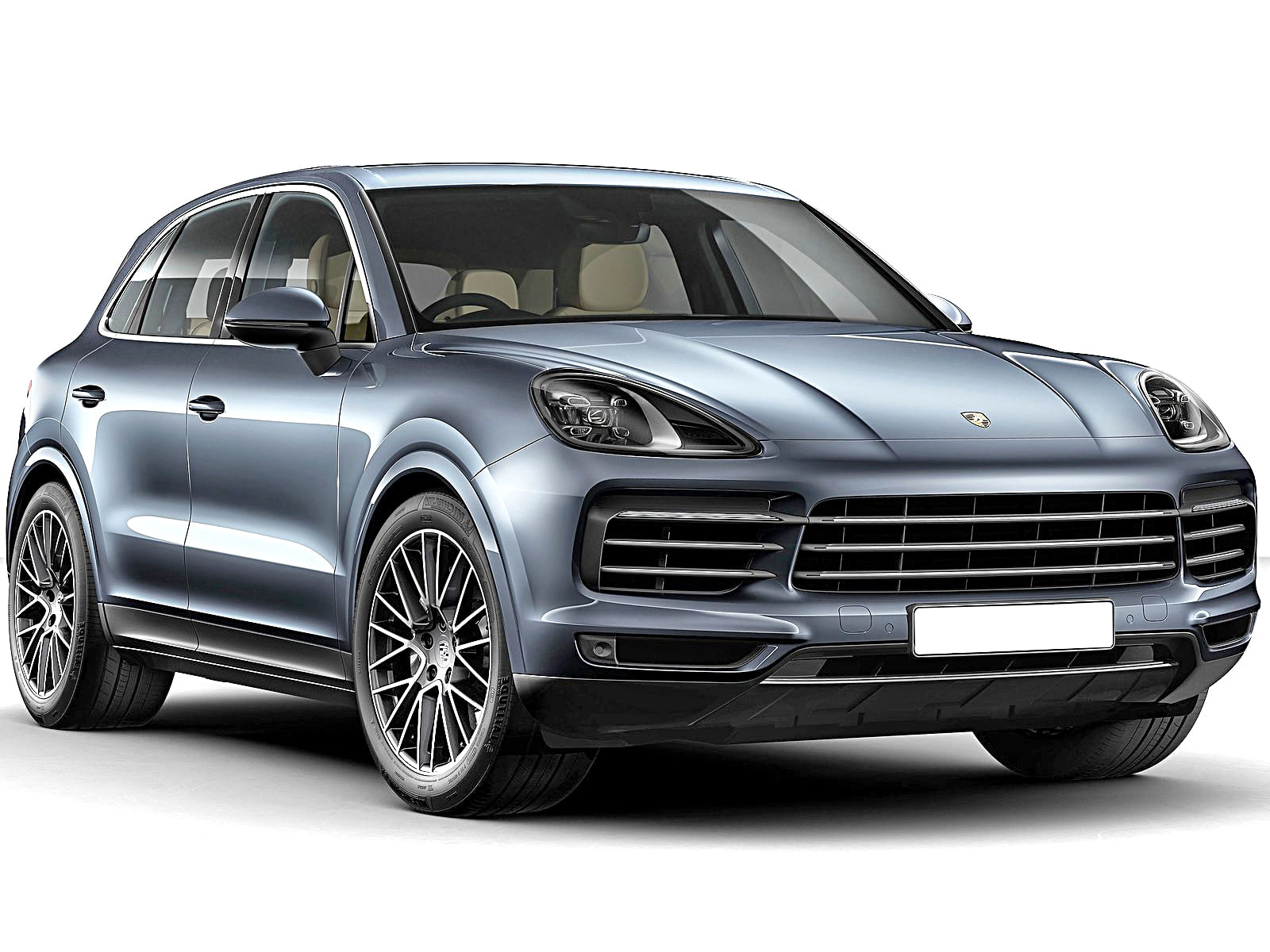Porsche Cayenne facelift review, test drive
Porsche's gone and made its already brilliant Cayenne even better; we take it for a spin.
Updated on Aug 24, 2015 01:24:10 PM
7,614 Views
Follow us on
Porsche Cayenne facelift.



Porsche is the world’s premier sportscar maker. No one has a more successful model lineup. And for purity of purpose, the German marquee is really right up there. Yet, its most successful car isn’t the iconic 911, the one with the big flat-six engine hung out the back. It’s this one, the hulking Cayenne SUV.
Now understandably, this comes as a bit of a surprise. But think about it for a minute and it’s clear. As against a sportscar that appeals to a relatively small group, a sporty SUV with a well-built interior and luxury trimmings appeals to almost everybody. And the badge helps too. “I drive a Porsche” does have a nice ring to it.
The real reason for the Cayenne’s blockbuster success, however, is that it walks the talk: it looks and drives like a pukka Porsche. This was true of the first-generation car in 2002 (the E1), and is true of the newer-generation E2 which, if anything, drives even better. Question is, is this facelifted and updated E2 II better still?
So what’s new here? The most obvious is the nose. What you notice right away are those 918-like four-point daytime running lights. The bonnet is now wider, the grille is flanked by two additional inlets with ‘airblades’ that shape the airflow into the inter-cooler and there are new flush-mounted tail lights at the rear too. Unlike the first generation, however, it is no longer possible to identify the engine variants just by looking at the grille. The difference lies in the tail pipes –the Cayenne S gets double-barrel round ones, whereas the turbo gets twin D-shaped ones; take a look.
There are changes on the inside as well. The 918-type steering wheel is the most obvious addition. Look down towards the Drive Select menu and you also see the addition of Sport Plus, not present on earlier versions of this SUV. Porsche has also improved comfort levels at the rear. There is a bit more space eked out by the newly positioned rear seat. You get a full-sized seat, there’s plenty of legroom, thigh support is very good and you are sat at an almost perfect height. Visibility out isn’t great, however, and sometimes you need to look past those tall headrests to get a better view. What really lifts the experience is the fact that this remains one of the nicest SUV cabins there is. Yes, the insides of the Range Rover are more plush and better trimmed, but the Cayenne isn’t too far behind. With the updated car also comes an updated engine range: the now more powerful V6 turbo diesel, a V8 twin-turbo diesel, a new V6 turbo petrol (that replaces the naturally aspirated V8), a V8 twin-turbo petrol and a plug-in V6 petrol hybrid too. That’s five distinctly different engines. Porsche claims that the latest Cayenne is more powerful and faster, yet more economical.
The S diesel, for example, with its stonking 4.2-litre twin-turbo V8 380bhp, is insanely quick for a two-tonne diesel SUV. It can hit 100kph from rest in a mere 5.3 seconds. Even more incredibly, it can growl its way up to 160kph in just 12.9sec. And that makes it faster than even the original petrol Cayenne Turbo that so completely rewrote the SUV performance rule book back in 2002.
But is it nicer to drive? I’m out on a mountain road, finally. The road ahead is anything but conducive to fast motoring. Barely wider than the width of the Porsche, it twists, turns and ◊∆ bobs like a rivulet running down a steep mountainside. There are blind drops, some corners double up on themselves and at times the road narrows down even further. “There’s no way I’m going to be able to exploit the new Cayenne fully here,” I tell myself, “I’ll have to
wait for another road.”
What I haven’t factored in is the overall precision that’s built into the new Cayenne’s chassis. Yes, it’s as big as a bus, and as square as a block, but it’s incredibly precise. What also helps massively is that you don’t need to lead it around by the nose, or yank it into a corner. Turn-in is sharp and that means it goes exactly where I point it with only a suggestion of the steering wheel. Now this is understandable at low speeds, but this precision remains even as I up the pace, impressive when you consider that two tonnes are being transferred from one side of the car to the other. What’s keeping it all manageable, of course, is the active antiroll bar at the rear. And Porsche says it has specifically improved suspension mounts to deliver even more agility. Soon I’m flying along said narrow mountain road faster than I would have dared, and it’s all down to the Cayenne which, once on the move, feels as accomplished as some of the finest handling sedans around; albeit with a touch more body roll.
After monstering this long rally stage, the 420bhp Cayenne S and I drop back down onto a wider dual carriageway. I’m keen to see just how good this new ‘entry’ petrol motor is, and so I pull it hard at every opportunity I get. Very quickly, a couple of things become apparent – there’s bags and bags of pulling power here, a lot of which is due to the fact that it has a really strong midrange. The Cayenne gets shoved in the back by a wave of torque every time I flex my right foot, and the best bit is that the push keeps getting stronger and stronger. As a result, momentum is huge and the best way to keep this engine on the boil is to short shift and let the midrange do all the hard work. Of course, this turbo motor lacks the crispness and sharp responses of the naturally aspirated flat-six motor seen on Porsche’s sportscars, or even the V8 that was on the earlier car, but that’s only to be expected. And is there a better gearbox than ZF’s eight-speeder? Not really.
What the new Cayenne does exceptionally well is handle long fast corners. Despite the weight of the car wanting to go over to the outside, the Cayenne settles on its air suspension rather nicely. Initial bit of roll done, it feels balanced and composed, and then urges you to go quicker and quicker. And that famed Porsche precision remains, even with the car sliding and the tyres howling in protest.
Of the various driver modes, the new Sport Plus is the most aggressive. Still, it can be used over a good variety of well-paved roads. The introduction of Sport Plus has also widened the gap between the various modes and so ride comfort now is even better. The suspension does get a bit crashy over big sharp bumps, but otherwise ride is pretty acceptable even in Sport. Use Comfort, however, and the suspension becomes really supple, with the big heavy chassis smothering every difficult patch that comes along. The air suspension on this car also allows you to lift up the body so that there’s enough ground clearance to tackle rough trails. But don’t get too ambitious – remember, this is a road-biased SUV at the end of the day.
Later on, I make it a point to sample some of the other engines in the lineup, all of which are now slightly more powerful. The base diesel now feels much more eager as it has a healthier 262bhp rather than 245bhp, and the insanely quick V8 diesel has a bit more power too. But it’s the full-fat V8 turbo, now with 520bhp and its aggressive throttle responses, that makes an impact. There’s so much grunt under your right foot, it feels ever so slightly unhinged as it rockets past 220kph on even the shortest of stretches. Later I see the claimed performance figures: 0-100kph in 4.1sec and 0-160 in 10.3; now tell me that’s not crazy for a car that weighs 2185kg!
What Porsche has done with the new Cayenne is, taken an already brilliant car and made it even better. Offroad driving is not its forte and it isn’t quite as plush on the inside as the Range Rover, but for everything else, there’s simply no touching it. This just could be the best luxury SUV in the real world. With prices expected to start at around a crore, the Cayenne is more than the competition. But if you like to drive and can stretch your budget, there really is nothing quite like it.
Copyright (c) Autocar India. All rights reserved.






Comments
Member Login
Personal Details
No comments yet. Be the first to comment.